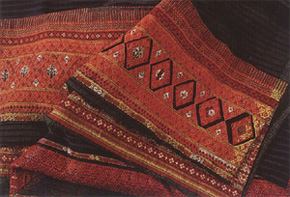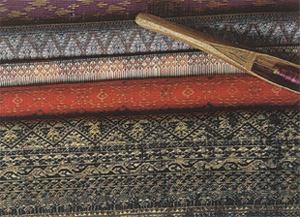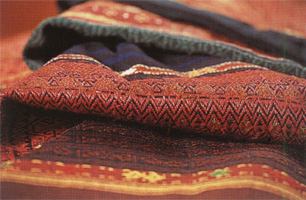|
|
|
The Arts
|
Weaving : From Thai Silk to Homespun Hilltribe Cloths
The gorgeously a iridescent, nubby
Thai silk may have originated in
mirth eastern Thailand , where clolh
weaving is a traditional folk craft.
Rearing their own silkworms and
spinning and dyeing the yam, northeast
village woman use primitive hand looms
to produce shimmering bolts of cloth for
sale in faraway markets.
named Jim Thompson revived the
industry and made the silk known lo
international markets. There are a
number of silk companies today, many
of them in or around Bangkok, but the
northeast is still the main centre of
production; near the northeastern town
of Pak Thong Chai, the company Jim
Thompson founded has built the largest
hand-weaving facility in the world.
 |
Homespun textiles made by northern hilltribes
|
Besides plain and printed silks of
various weights, a number of special
weaves have become celebrated. One of
these is called mudmee, a kind of skill
which is a specialty of the northeast.
Thanks to the encouragement of Her
Majesty Queen Sirikit mudmees is now
in wide use. Another sought after silk
is richly brocaded with gold and silver
thread in traditional Thai patterns.
This requires the most time and skill to
make and is therefore the most expensive. used mainly on such ceremonial
occasions as weddings.
 |
Printed Thai textiles
|
Though it prospered in early
Bangkok, the silk industry went inio a
long decline starting in [he latter pan
of the 19th century when cheaper,
factory -prod need fabrics from China
and Japan began to flood the market. An
attempt to improve production was
made during the reign of King
Chulalongkorn, when Japanese experts
were brought in and a Department of
Sericulture was established, but the
effort enjoyed limited success. A few
vears after World War II, an American
Printed Thai textiles.
 |
Thai silk and cotton textiles offer a wide range of colours and patterns.
|
Thai silk is today the best known
of all the country's handicrafts, found
not only in countless local shops but also
throughout the world. It is exported in
plain lengths, plaids, brocades, stripes.
prints, and checks and is supported by
an extensive manufacturing and sales
infrastructure, a far cry from its humble origins.
 |
Thai silk, an ancient craft, was revived in late 1940s and is now internationally renowned.
|
Supple handwoven Thai colton is
also popular. Made in a variety of
weights for both clothing and home
furnishings, it is being exported in
increasing quantities,
such as cotton and local hemp lhat
produces a fabric resembling linen.
among fashionable ladies in Bangkok
and in other countries as well.
Fine embroidery is one of the traditional crafts of the nonhern hilltrihcs,
with the Hmong and Yao people being
particularly skilled at creating splendid.
boldly-coloured geometric designs- In
long strips, these are used 10 edge a skirt
or jacket, in squares to enhance a vest
or shoulder bag, in larger pieces to make
a handsome quill. Her Majesty Queen
Sirikit has long been an admirer of tribal
embroidery and has helped promote the
craft, particularly on homespun cloths.
| | |
|
|